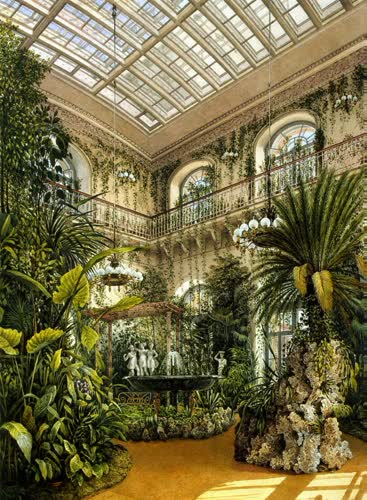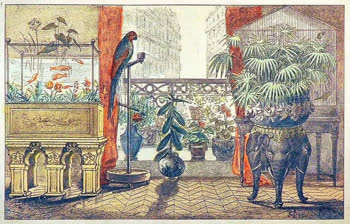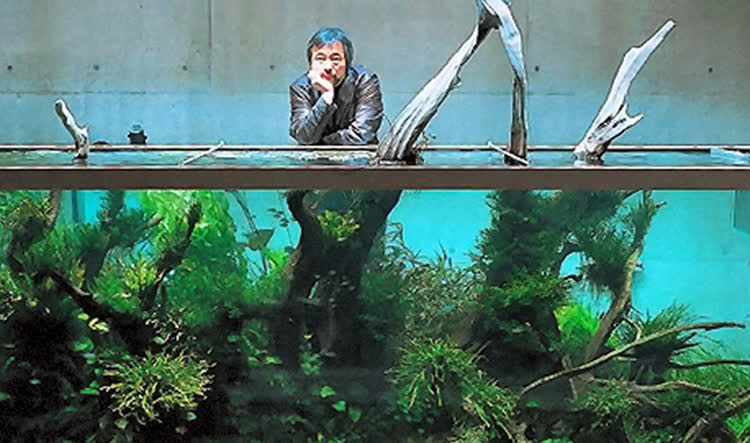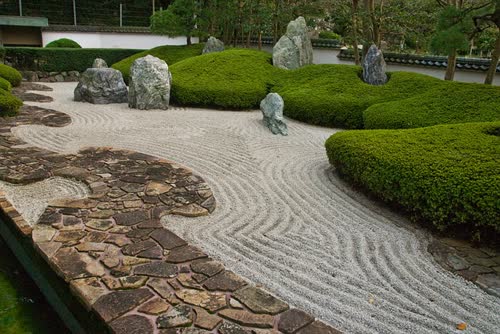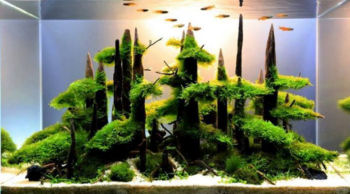|
We'd like to think the use of aquatic plants as an aesthetic is fairly contemporary, the ancient Chinese and Egyptian kept decorative bowls and pots of goldfish and plants such as Nile Papyrus but for something we might recognize today as an aquarium then we would have to look at the 1800's in Europe to find the metal framed glass paneled container of various forms of aquatic life not in the least included Madagascar lace plants which were grown "as per potato" outdoors or indoors in a conservatory, made popular in that century for the express purpose of being able to maintain topical species in Britain and Europe in year round. |
|
Nathan Hill wrote in Practical Fishkeeping: "The origins of the Dutch style came from the NBAT, the Dutch Society for Aquarists. Founded in 1930, it wrote articles on the hobby and at its peak had more than 24,000 members. Until 1956 it influenced thinking and the Dutch aquascaping style arrived In that year the NBAT looked at determining the general guidelines on how a planted tank should look and what rules should be followed. It continues to run an annual contest that encompasses many forms of the hobby, as well as what we know as Dutch aquascaping, with the judges visiting aquariums rather than relying on submitted photography. There's no wood or rock in a Dutch set-up — so plant choice and positioning are vital." The only thing different about dutch tanks that might differ from most aquarium of the era was the large amount of light used in a combination of fluorescent tubes and halogen spot lights well before the use of HID lamps. Here is the first place winning tank in the Dutch category for the Dutch planted tank show in 2017:
 |
|
From the late 1970s on the face of aquarium plant keeping was forever changed due to the efforts of two German businessmen who were extraordinary nature lovers: Kasper Horst and Horst Kipper. They traveled to the tropical jungles where tropical aquarium plants grow and made a large number of very precise water tests and measurements throughout their travels and the results were rather staggering - our water is wrong, the light we use is wrong, the way we thing about plants is wrong and in short the reason plants had never been predictable and reliable in aquaria was the notion that can be found in Innes book that "fertilizing aquarium plants is a foolish and dangerous endeavor" but then goes on to suggest a tea of sheep manure applied with a burette directly under the roots would be a good start if you were to attempt this foolhardy practive. In other words a guy using a burette - which is long glass tube you use with the vacuum of your mouth to transfer liquids in a lab - with sheep shit tea on his breath - is calling everyone else "foolish" ? Innes was a great mean and deserving of no more possible respect and all his advice is sage and wise. Except this bit of nonsense that sounds like Poe wrote it after a particularly bad opium bender; literature in Gentleman's gazettes in the 1800s talk of growing lace plants like water lilies in the back garden treating them "as potatoes" and doubling the rhizome length. After that any notion of feeding aquarium plants has not progressed beyond 100 years of throwing more shit at them, a thin layer of mineralized manure under fine beach sand has been in practice since at the very least WWII and quite probably long before that. Horst and Kipper changed that and the way we keep aquarium plants for a number of very important reasons and this from where the modern practice of adding CO2 from a gas cylinder comes from, its where the use of bright lights comes from, it's where the the idea of daily and weekly dosing specific macronutrients and trace elements comes from. Thus the use of CO2 gas, bright lights and reliable aquarium fertilizers all happened when it did because of thee two and this section exists not to highlight the layout of the tank but to give proper credit the two that got the ball rolling which led the refinements that make every aquascpape within reach of even a beginning due to a generous does of science. |
|
In the 1990s until his untimely death in 2014 Takashi Amano revolutionized the world of aquarium plant layouts not only founding the idea of an aquascape but doing so by emulating nature in the same way the Japanese art of Bonsai strives to emulate a distant scene of ancient trees. |
|
Whether a display tank, show tank or biotope tank for species from fast running streams these unusually shaped tanks present special challenges and aesthetic opportunities. |
|
Amano coerced aquascaoers, armed with the knowledge Dupla had spread, towards the ideals in Japanese bonsai. One possible next step forward then is the zen garden. Single species scapes. Multi-tank scapes. |
|
Possibly because of the similarity of the Japanese style beginning in the 1990s and the Japanese art of Bonsai it seemed only a matter of time until these two eventually crossed over and did so around 2014. Prior to that year you will not find a single photos of realistic looking tiny trees made from a combination of live growing aquarium plants on simulated (or actual dead bonsai) trees. While not common they are not rate now, either are are rather striking. Some of the most dazzling aquascape are done on this style. |
